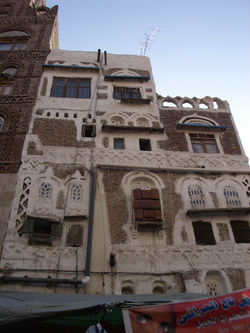Resources > Building with Earth
Building with Earth: Overview
In October 1985 I was offered a position in the World Bank Project Implementation Unit as a local consultant to research various aspects of primary school design and construction.
The overall objective of the consultancy was to prepare designs for classroom buildings that could be built at minimum cost by rural communities using as far as possible local materials and building methods. As noted elsewhere, there was a lack of two basic buildings materials: clay and lime. This meant that it was not possible to make fired bricks and lime and cement had to be imported and were thus expensive, especially in the rural areas. One of my main tasks therefore was to develop methods of using traditional mud blocks for walls in ways that would make them last longer and also to find alternatives that were not as expensive as concrete blocks.
I experimented with the use of traditional mud blocks and stabilised-soil blocks (using both the ‘Cinva Ram’ machine that had been developed by Peace Corps and a new block-making machine, the ‘BREPAC’ machine that had been developed by the UK Building Research Establishment) for constructing walls. I also experimented with various foundation types for all wall types ranging from traditional concrete footings to rammed stone footings.
I developed a design for a standard classroom that could accommodate 44 pupils using double desks and single chairs. They were designed in such a way that they could be built using sun-dried mud bricks, stabilised-soil blocks or sandcrete blocks according to the budget of those constructing them. The classroom walls on both sides were stabilised with block piers (of whatever material was being used for the walls) at approximately 7’ 6” (2.25 metres) centre intervals and these also supported the roof trusses. Where there were front access verandas the rafters were supported on large blockwork columns. The buildings had no reinforced concrete of any sort and in fact the only concrete used was mass concrete in the foundations (in the cases where stone was not used); in the floor slabs; in pads on top of the blockwork piers and columns to support the roof trusses and in pockets in the cross- and end-walls to retain the holding-down bars for the trusses. The walls were protected from the rain by large roof overhangs, which are essential in a country like Sierra Leone that has large amounts of rain and a hot and humid climate.
A number of lessons were learned with regard to materials and construction that still have some relevance today. The use of stabilised-soil blocks proved to be a very effective way of improving the quality of walls while not substantially increasing costs. The BREPAC machine (which has unfortunately gone out of production) produced very high quality blocks although there were some issues encountered with its use which will be gone into in a later post.
Even the cinva-ram machine, if properly used can produce very good blocks but these blocks must have some protection from heavy rain such as large roof overhangs or rendering and must be used with stone or concrete foundations. It was concluded that, if good quality foundations are provided and the external walls are protected from the rain, both mud and stabilised-soil blocks provide economic and acceptable materials for walls.
Documents Included:
Cemented Soils for Floor Slabs
Earth Building AJ Article 1994
Foundations for Earth Buildings
Laterite Soils for Rural Housing
Making Blocks with the Cinva Ram
Project Gallery
 |  |  |
|---|---|---|
 |  |  |
 |  |  |
 |  |  |
 |  |  |
 |  |  |
 |  |  |
 |  |  |
 |  |  |
 |  |  |
 |